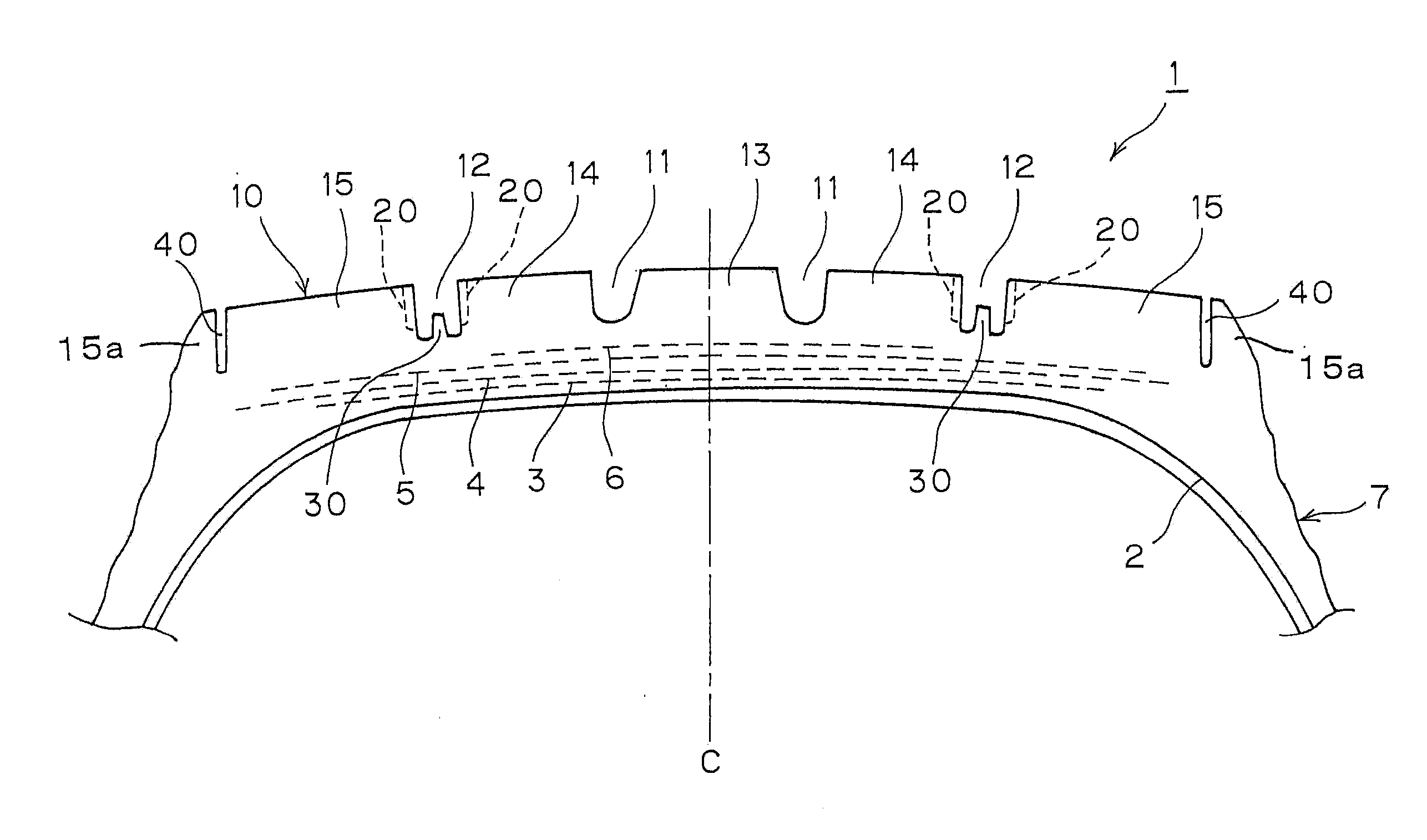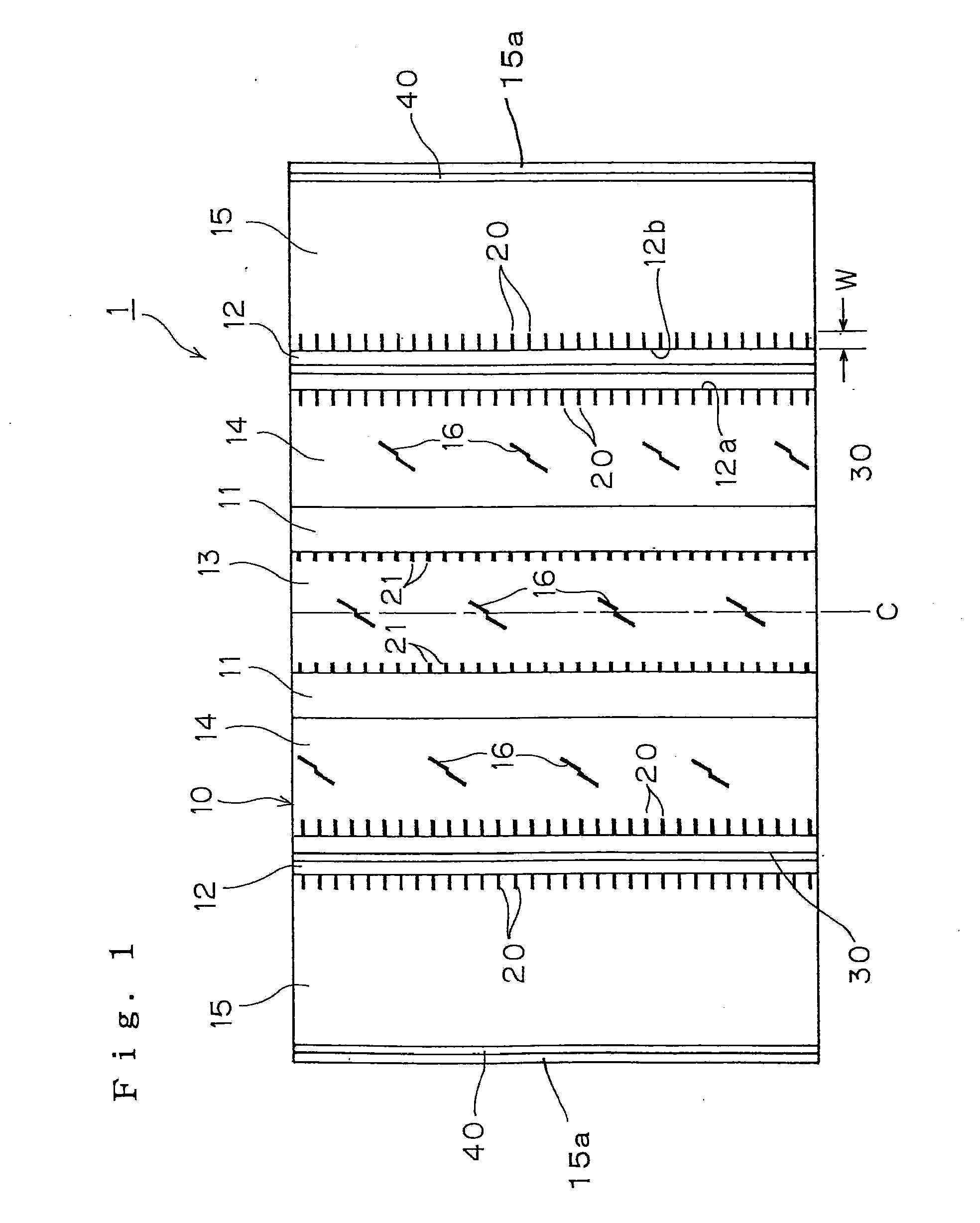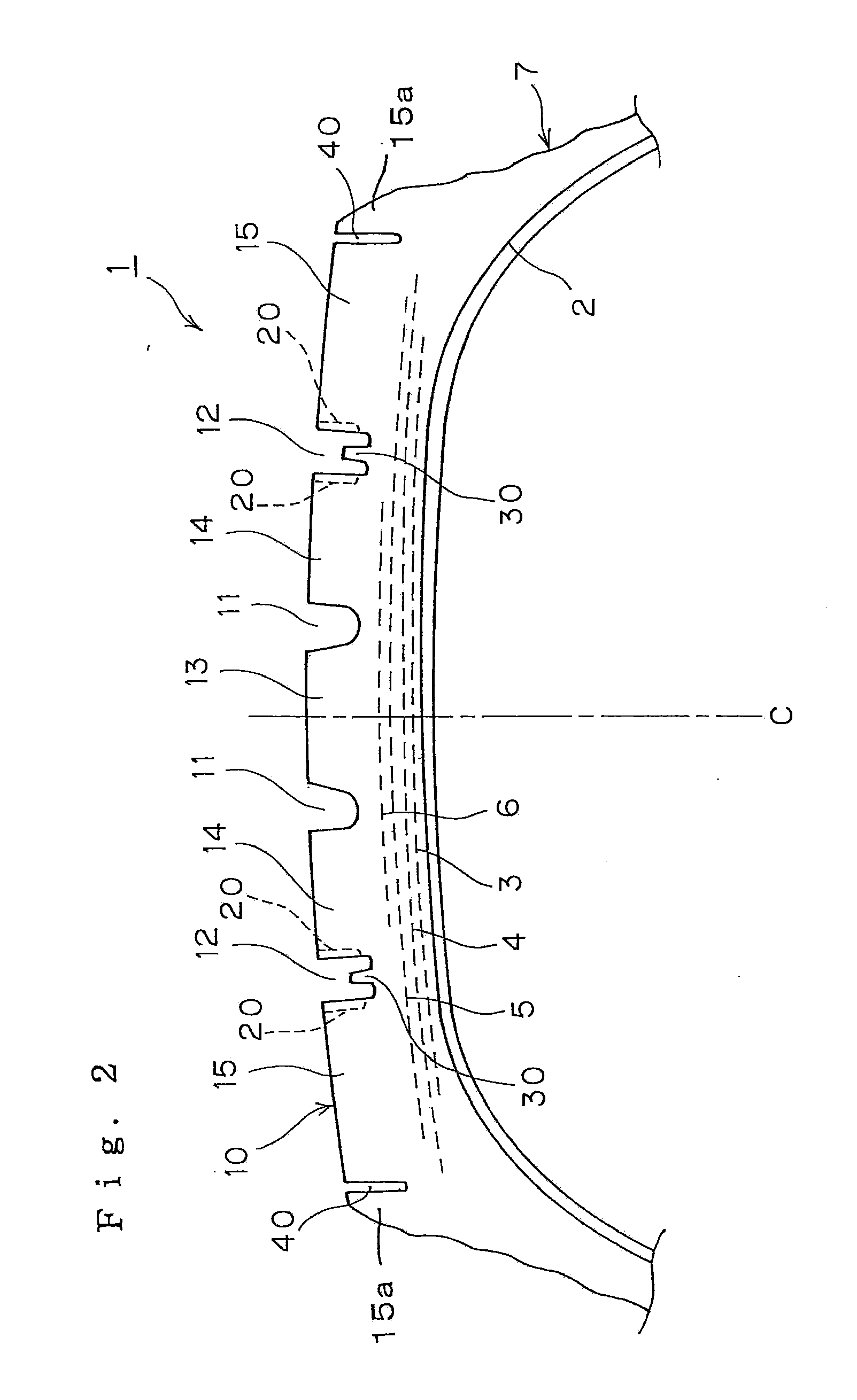Pneumatic Tire
a pneumatic tire and tire body technology, applied in the field of pneumatic tires, can solve the problems of uneven wear in the shoulder region, increased slipping amount to the road surface, and insufficient counteracting of bending of the tread, so as to increase the rigidity of the bottom, suppress uneven wear, and easy to wear.
- Summary
- Abstract
- Description
- Claims
- Application Information
AI Technical Summary
Benefits of technology
Problems solved by technology
Method used
Image
Examples
embodiment
[0050]Hereinafter, the invention will be specifically described based on an embodiment.
[0051]The following tire performance evaluations were carried out on prototype tires (radial tires of 295 / 75R22.5 which were each made up of a steel carcass of one ply and a steel belt of four plies) which were experimentally produced to each have the tread pattern shown in FIG. 1 and to specifications described in Table 1.
[0052]The following specifications were made common over the prototype tires produced. The width and depth of main grooves 11, 12 were 11 mm and 12 mm, respectively, and the width of any of sipes 20 opened in both groove walls of the main grooves 12 was 0.6 mm, the radius of curvature of a sipe end portion being 0.3 mm. The height of a rising portion 30 was 6.5 mm, and the rising portion 30 was formed into a trapezoidal shape in cross section in which a width at a bottom side was 5 mm and a width at an upper side was 4 mm and was provided in such a manner as to extend continuous...
PUM
 Login to View More
Login to View More Abstract
Description
Claims
Application Information
 Login to View More
Login to View More - R&D
- Intellectual Property
- Life Sciences
- Materials
- Tech Scout
- Unparalleled Data Quality
- Higher Quality Content
- 60% Fewer Hallucinations
Browse by: Latest US Patents, China's latest patents, Technical Efficacy Thesaurus, Application Domain, Technology Topic, Popular Technical Reports.
© 2025 PatSnap. All rights reserved.Legal|Privacy policy|Modern Slavery Act Transparency Statement|Sitemap|About US| Contact US: help@patsnap.com



